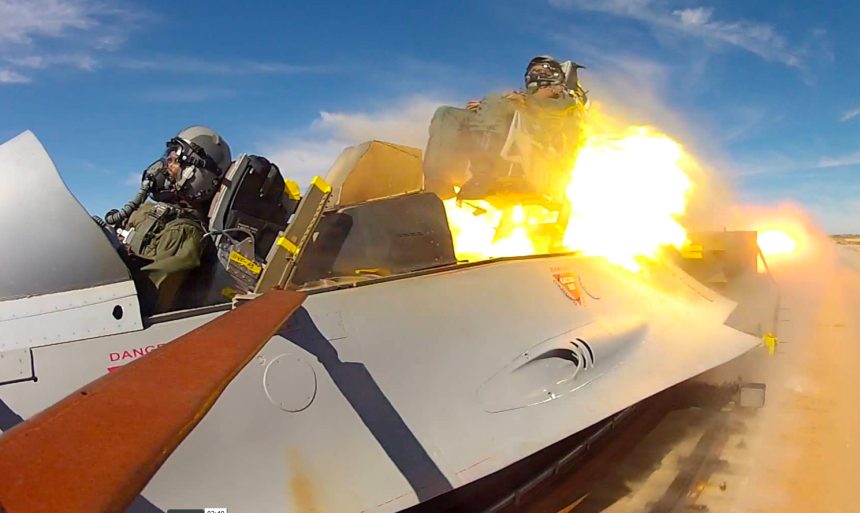The 10-mile long Holloman High Speed Test Track (HHSTT) is a United States Air Force aerospace ground test facility used to perform a various variety of tests, including simulated ejections.
Located at Holloman Air Force Base, New Mexico, and operated by the 846th Test Squadron, the HHSTT is one of the world’s longest tracks, used to perfom tests in a realistic scenario, where a special sled can be launched at speeds in excess of 9,000 feet per second, that is around Mach 8.6 calculating for altitude!
A recent article published by Airman, the official magazine of the United States Air Force, shed some light on the activities carried out at the HHSTT whose mission is “to provide a cost-effective, realistic, dynamic test environment for the entire acquisition community, including the DoD, and contractors. As a ground-based test facility, the HHSTT provides a cost-effective, controlled test environment for high-speed weapons, systems, and components.”
Ejection seat tests are no longer carried out with humans. The last pilot to ride a rocket-propelled sled was Col. John Paul Stapp, who earned the title “the fastest man on Earth” at Holloman on December 10, 1954, to a land speed record of 632 mph in five seconds: during the test, Stapp decelerated in 1.4 seconds, which equaled 46.2 Gs, the greatest g-load ever sustained by a man. His eyes were flooded with blood and although he ragained most of his normal vision on the next day, he lost his eyesight forever.
Nowadays, tests are carried out with full-scale hi-tech mannequins, dubbed ATDs (Anthropomorphic Test Devices) that simulate the dimensions, weight proportions and articulation of the human body, and embed sensors that record data about the dynamic behavior of the ATD in simulated ejections. The collected data is then analysed and complemented with high-speed imagery and footage (like the one below) so that scientists can assess the outcome of the test.
“With a human you’re going to have to conduct a post-testing examination and then look at variables from human to human, where if you can put all the instrumentation on board a mannequin you can get all that data,” said. Lt. Col. Jason Vap, commander of the 846th Test Squadron at Holloman AFB, to Airman’s Master Sgt. Brian Ferguson for the article titled “Staying on track“. “You can take that one step further and figure out what you need to do to your seat design, or perhaps a helmet design, or your flight gear to mitigate problems. Those are things that you are only going to get from a highly instrumented mannequin. Not from post-test examination of an individual or examining what kind of pains that they suffered from that.”
Take some time to watch the following video for more details on the activities at HHSTT. By the way, the goal speed is Mach 10, not surprising, considered the U.S. Air Force is working on hypersonic missiles and aircraft…









